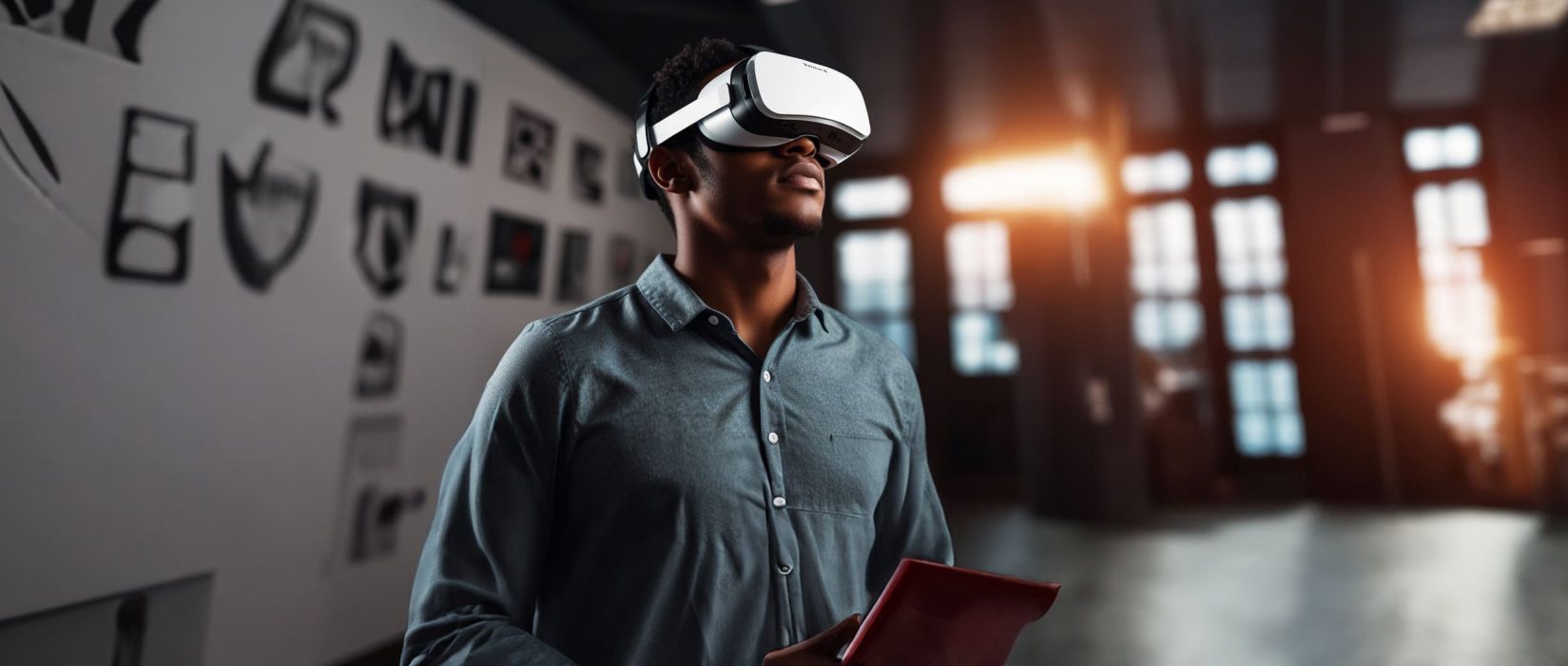
The use of Virtual Reality and Augmented Reality in the Metaverse
The metaverse is an emerging concept representing a set of interconnected virtual spaces within which people can interact with each other and with digital environments in an immersive and three-dimensional way. It is a fusion between physical and digital reality that allows the creation of a virtual universe accessible via the internet.
The metaverse is thus both interactive and immersive, as users have the opportunity to interact realistically with digital environments thanks to the use of technologies such as Virtual Reality (VR), Augmented Reality (AR) and Mixed Reality (MR). Such interactions can occur via digital avatars representing users in the virtual world.
It is important to emphasize that the metaverse exists independently of users' presence. This means that environments and interactions continue even when a user disconnects, creating a continuous and evolving experience that is uncannily similar to the real world.
VR and AR for technical assistance and Virtual Training in the metaverse
When industrial machinery malfunctions, a team of technicians must usually physically intervene. This process involves a considerable investment of resources and, very often, causes downtime, which is financially detrimental to the company. Through Virtual Reality (VR) and Augmented Reality (AR), technicians can instead analyze the problem remotely and, in many cases, even guide a user physically present on-site toward its solution, reducing stoppage.
In addition to technical assistance, VR and AR can be used for training in the remote metaverse. This allows workers to carry out on-site training, avoid travel, reduce costs and improve the effectiveness of these sessions. Moreover, experimenting with a virtual object makes the experience more pleasant than classic training manuals and videos and stimulates learning and memory.
Training carried out in this way also dramatically improves safety: a worker who has to carry out delicate operations in dangerous environments will feel much safer if they can test the procedures dozens or hundreds of times in a virtual environment before performing the physical job.
Virtual factory models with Digital Twins: the evolution of Industry 4.0
Digital Twins are virtual representations of physical objects, systems or processes that accurately reflect their real-world counterparts. Constantly updated with real-time sensor data, these digital models allow users to continuously monitor, simulate and optimize performance.
Digital Twins are used today in the manufacturing sector to improve production lines, reduce downtime and maximize product quality. Among the best-known benefits of Digital Twins are the optimization of efficiency, the reduction of operational and maintenance costs, innovation in developing new products and services, and the improvement of quality thanks to continuous monitoring and constant feedback.
More and more manufacturing companies are starting to connect massive networks of Digital Twins to create virtual models of entire factories, product lifecycles and supply chains. With the development of Industry 4.0 technologies, using digital twins means optimizing processes and products: the digital twin of a machine, for example, can provide precious information on the performance and state of health of the machine itself, allowing the company to detect malfunctions, optimize performance and schedule the necessary predictive maintenance interventions – all strategies that reduce downtime due machinery failure.
Furthermore, by analyzing the data from the machinery in an industrial plant it is also possible to monitor energy consumption and optimize processes that waste energy.
Likewise, a product's digital twin proves to be an invaluable source of information for the manufacturer. By following the product's performance throughout its life cycle, the manufacturer can use the data to improve the product and provide customers with customized after-sales services.
Connected workers: a way to protect the health and safety of employees
Connected workers can interact with each other and access real-time data from various sources, such as IoT devices, sensors and digital twins, which will allow them to make informed decisions and respond quickly to changing market conditions or emerging problems.
Additionally, by using wearable or connected devices, companies can now monitor the health and safety of their employees easily, accurately and in a timely manner. This can help identify potential hazards, prevent accidents and ensure that workers operate in a safer and more comfortable environment.
Scopri le Serie correlate
Trending Topics
Show other categories





























